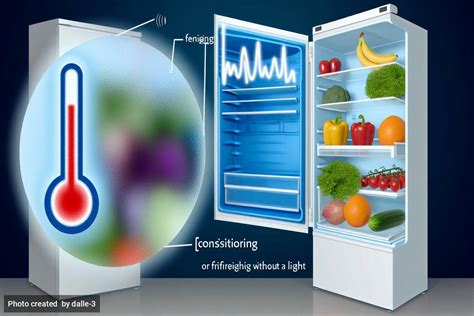How To Tell If A Fridge Is Working
Ronan Farrow
Apr 02, 2025 · 3 min read

Table of Contents
How to Tell if Your Refrigerator is Working Properly
Is your fridge humming along happily, or is it making strange noises? Knowing how to tell if your refrigerator is working correctly can save you from spoiled food and costly repairs. This guide provides a simple, step-by-step process to diagnose your fridge's performance.
Visual Inspection: The First Line of Defense
Before diving into more complex checks, start with a simple visual inspection. This quick check can often identify obvious problems.
Check the Temperature
- Feel the cold air: Open the refrigerator door and feel the air blowing from the vents. It should be noticeably cold. If it feels only slightly cool or even room temperature, there's likely a problem.
- Check the freezer: Similarly, open the freezer and feel the air. It should be significantly colder than the refrigerator section. Ice buildup can be a sign of inefficiency.
- Inspect for frost: While a light frost is normal in some freezers, excessive frost buildup can indicate a malfunction. Too much frost reduces cooling efficiency.
Look for Obvious Issues
- Power cord: Make sure the fridge is properly plugged in and the power cord isn't damaged. A loose connection or a faulty cord can lead to malfunctions.
- Door seals: Check the door seals for any cracks or gaps. Poorly sealing doors lead to warm air entering the fridge, causing inefficient cooling and higher energy bills. A simple test is to close the door on a piece of paper; if you can easily pull it out, the seal needs attention.
- Visible damage: Examine the fridge for any dents, cracks, or other signs of damage that might affect its operation.
Beyond the Visual: Deeper Diagnostic Checks
If your visual inspection reveals nothing obvious, it's time to move on to more in-depth checks.
Temperature Readings: Using a Thermometer
For a precise temperature check, use a refrigerator/freezer thermometer.
- Refrigerator temperature: The ideal temperature for your refrigerator is between 35°F and 38°F (1.7°C and 3.3°C).
- Freezer temperature: The ideal temperature for your freezer should be 0°F (-18°C) or below.
- Consistent temperatures: Ensure the temperatures are consistently within the ideal range throughout the refrigerator and freezer compartments. Fluctuations indicate a problem.
Listening for Sounds
While a gentle hum is normal, pay attention to unusual noises.
- Loud humming or buzzing: This might indicate a problem with the compressor or fan motor.
- Clicking sounds: Recurring clicking could signal a problem with the compressor's relay.
- Unusual gurgling: Some gurgling is normal as refrigerant circulates, but excessive or unusual gurgling could indicate a leak or other issue.
When to Call a Repair Professional
If after performing these checks you still suspect a problem, it's best to call a qualified appliance repair technician. Ignoring a malfunctioning refrigerator can lead to spoiled food and potentially more costly repairs in the long run. Early intervention is key to maintaining a well-functioning fridge.
Keywords: refrigerator troubleshooting, fridge not working, refrigerator repair, freezer temperature, refrigerator temperature, appliance repair, troubleshooting refrigerator problems, how to fix a refrigerator.
Featured Posts
Also read the following articles
| Article Title | Date |
|---|---|
| How To Splice Trailer Wires | Apr 02, 2025 |
| How To Transport A Paddle Board | Apr 02, 2025 |
| How To Spend A Day In San Diego | Apr 02, 2025 |
| How To Replace Sand In A Sand Filter | Apr 02, 2025 |
| How To Remove Limescale From Granite | Apr 02, 2025 |
Latest Posts
-
How Big Is St Lucia Compared To A Us State
Apr 03, 2025
-
How Big Is Rt 44 At Sonic
Apr 03, 2025
-
How Big Is North Korea Compared To Texas
Apr 03, 2025
-
How Big Is Nine Inch
Apr 03, 2025
-
How Big Is Lost Lands
Apr 03, 2025
Thank you for visiting our website which covers about How To Tell If A Fridge Is Working . We hope the information provided has been useful to you. Feel free to contact us if you have any questions or need further assistance. See you next time and don't miss to bookmark.
